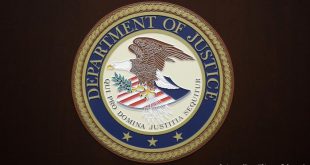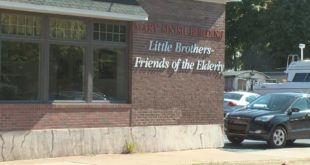
A new exhibit at Fort Wilkins Historic State Park in Copper Harbor takes visitors into the actual hospital ward where sick soldiers were cared for during a mysterious epidemic there more than 150 years ago. The “Ward Room” exhibit, which opened recently in the park’s former U.S. Army post hospital, also looks at the health care methods of that time.
Over the winter of 1844-45, an unknown disease with flu-like symptoms hit the garrison at Fort Wilkins. According to the fort doctor at the time, at least 13 cases were reported, and one soldier eventually died from the disease.
“We were excited to have the opportunity to create a new exhibit focusing on the stories of the epidemic,” said Fort Wilkins site historian Barry James. “It allowed us to open a space that the public has never had access to before, the hospital ward where those sickened by the epidemic were treated.”
Visitors stepping into the ward room will find patient beds, tables and medical instruments that re-create the original hospital environment. They will meet Charles Isaacs, the fort doctor who worked diligently to heal the infected patients.

“Dr. Isaacs ordered blood-letting and cupping, and prescribed doses of mercury and opium for the sick soldiers,” said James. “It may seem shocking from today’s perspective, but all of these were common treatments of the period.
“Dr. Isaacs recorded everything. He eventually published his findings in the New York Journal of Medicine. We’ve used a portion of his original research in the new exhibit’s storyline.”
Fort Wilkins was built in 1844, during the Keweenaw Copper Rush. In the 1840s, soldiers served to keep law and order in the recently opened copper district. Federal troops occupied the fort from 1844 to 1846, and again after the Civil War, from 1867 to 1870.
As part of its ongoing interpretation of the military post, the Michigan History Center, in cooperation with the Keweenaw National Historical Park Heritage Grant Program, funded the Ward Room exhibit. The Fort Wilkins Natural History Association provided additional support.
Fort Wilkins is a nationally accredited museum located one mile east of Copper Harbor on U.S. 41, in Fort Wilkins Historic State Park. The fort is open daily from May 15 through Oct. 16, 8:30 a.m. to dusk, and admission to the site and exhibition are free. A Recreation Passport is required for park entry. For more information, call 906-475-7857 or visit www.michigan.gov/ftwilkins.
The Michigan History Center is part of the Michigan Department of Natural Resources. Its museum and archival programs foster curiosity, enjoyment, and inspiration rooted in Michigan’s stories. It includes the Michigan History Museum, 10 regional museums, Thunder Bay National Marine Sanctuary and Underwater Preserve, and the Archives of Michigan. Learn more atwww.michigan.gov/michiganhistory.
 Keweenaw Report Your Source for Local News and Sports
Keweenaw Report Your Source for Local News and Sports






